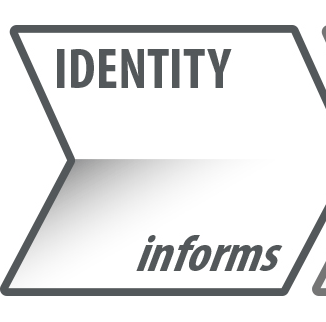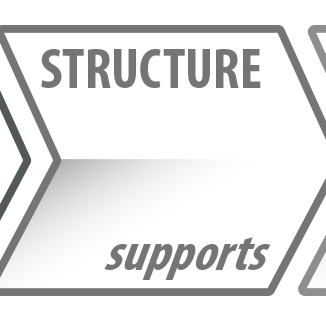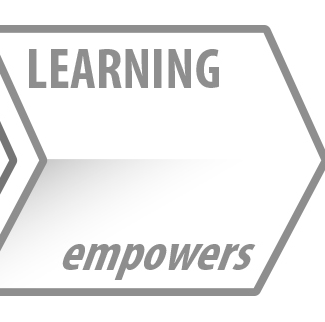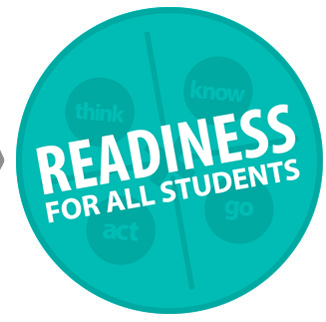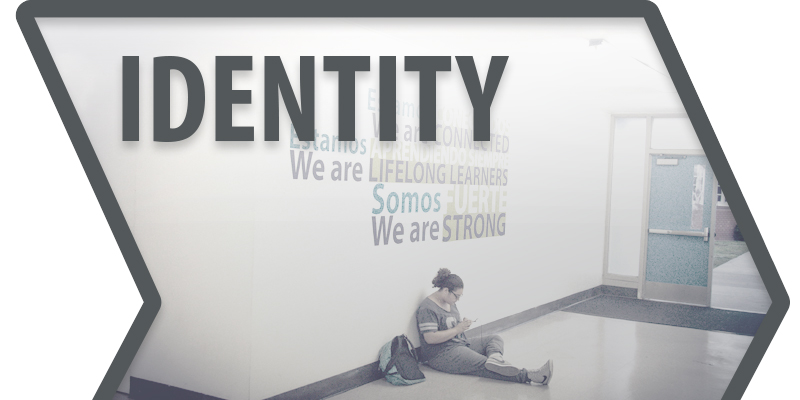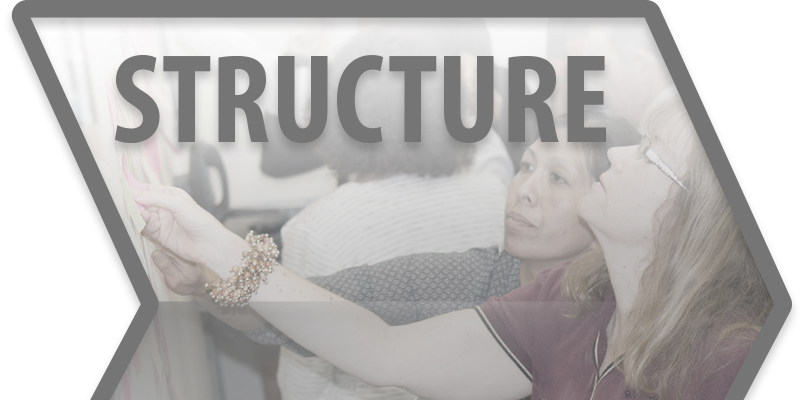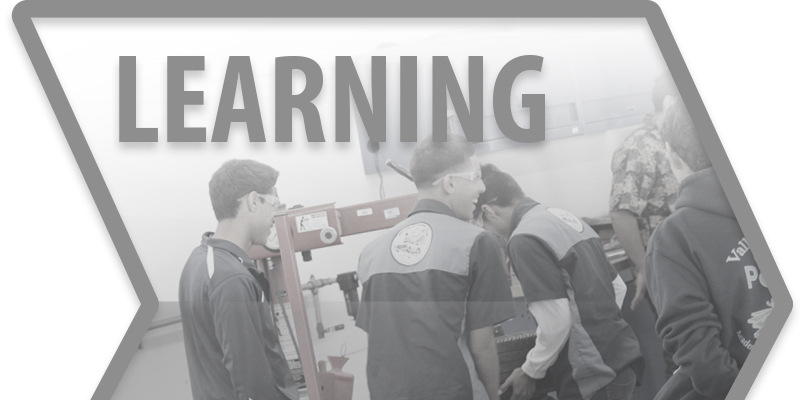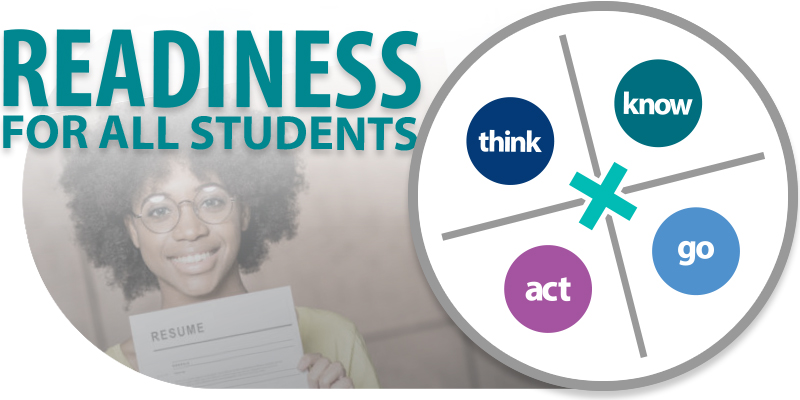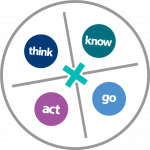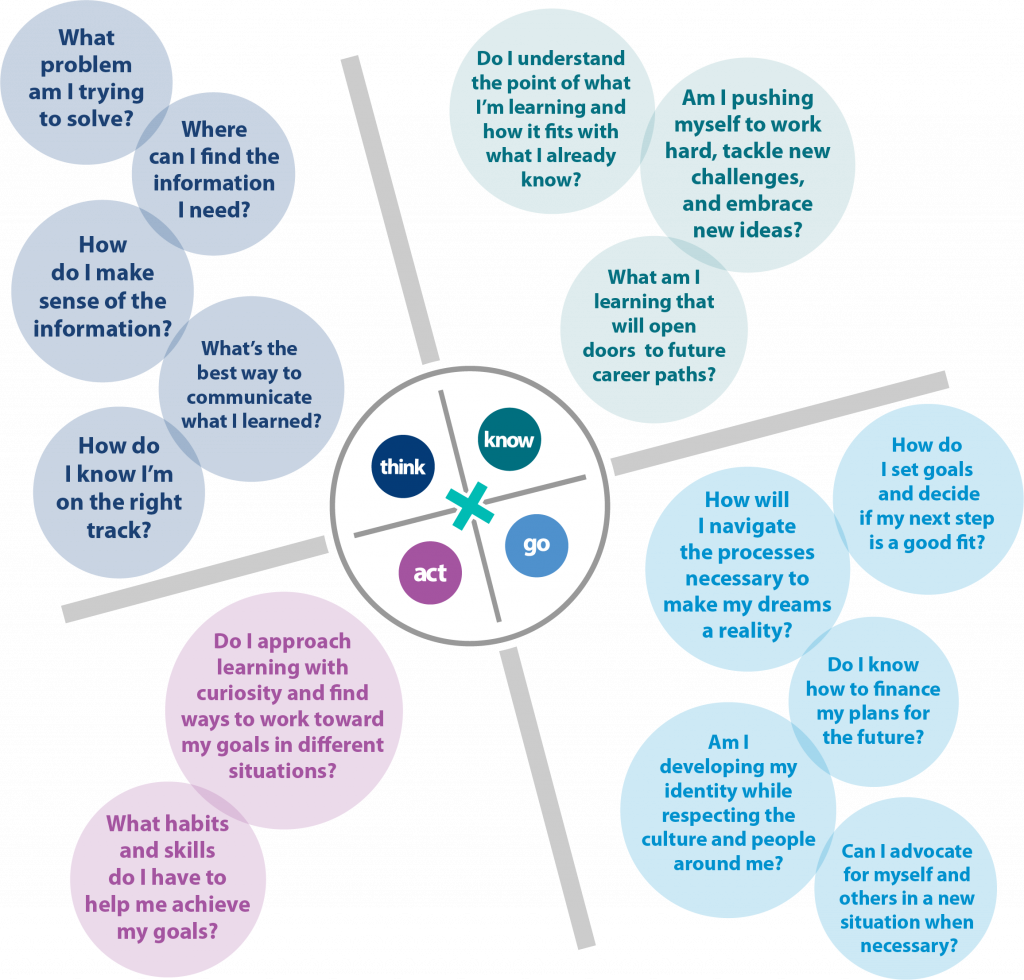We use The Inflexion Approach as an organizational framework designed to support schoolwide implementation efforts and to build learning communities that work for all students. The Inflexion Approach builds on the work of Peter Senge and Michael Fullan and was developed by Inflexion’s Executive Director, Matt Coleman, who used the framework as a high school administrator to drive decisions resulting in equitable outcomes for students.
The Inflexion Approach highlights four elements critical for making quality decisions to create learning environments that prepare students for life after high school. Our work at Inflexion supports educational leaders as they focus on these four elements. We believe that a clear, shared organizational identity informs the structures needed to support learning and empowers readiness for all students.

